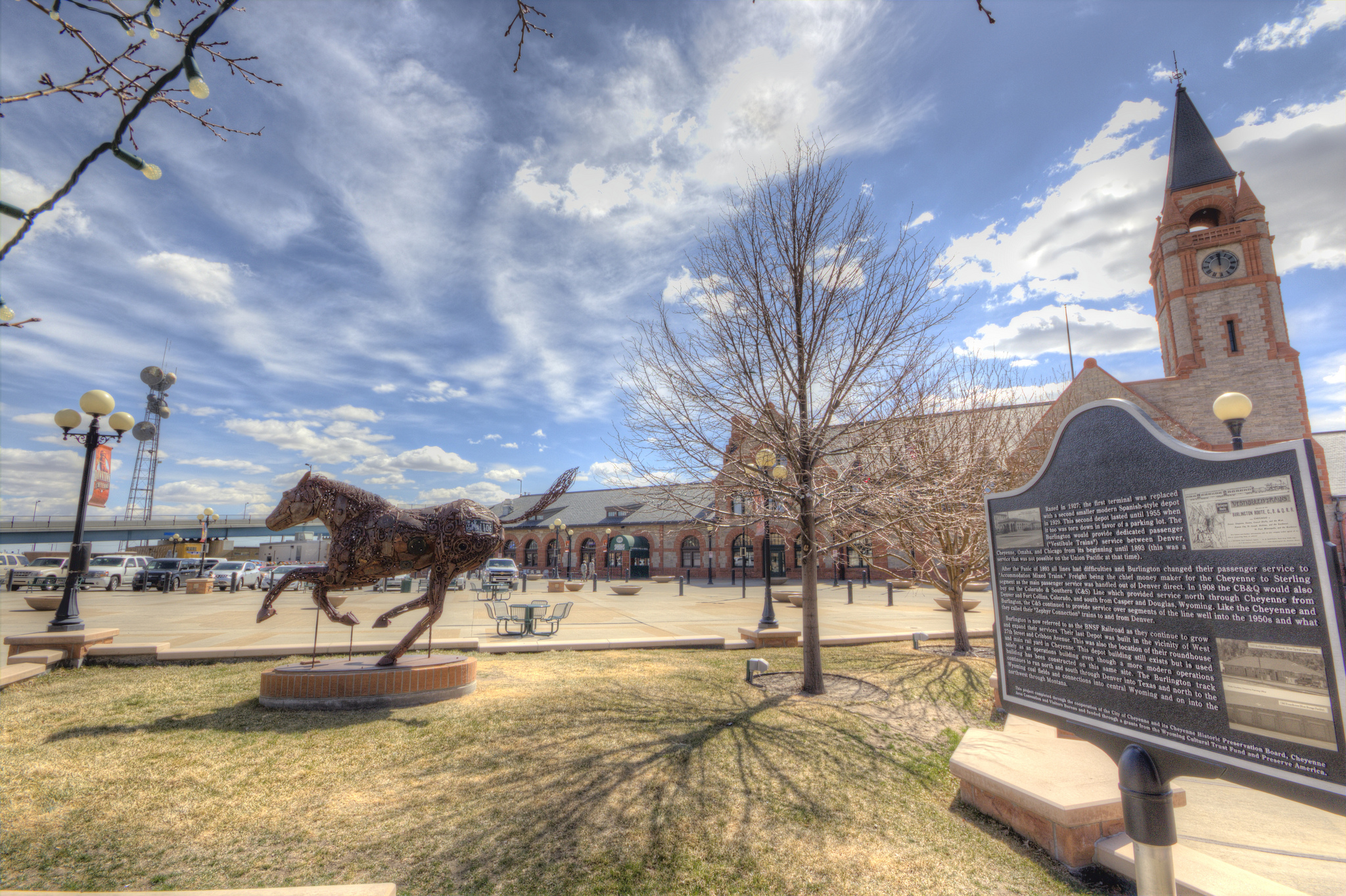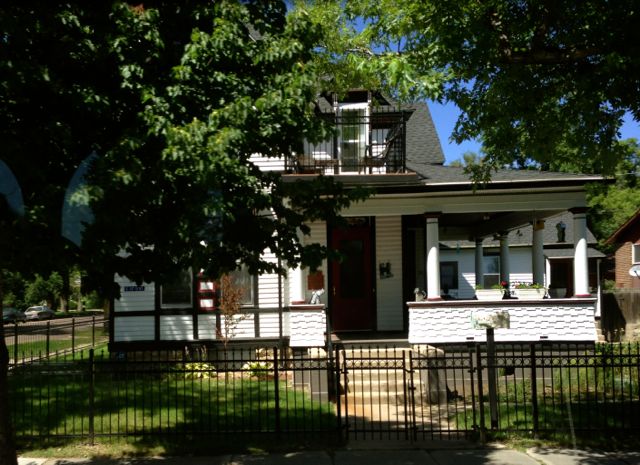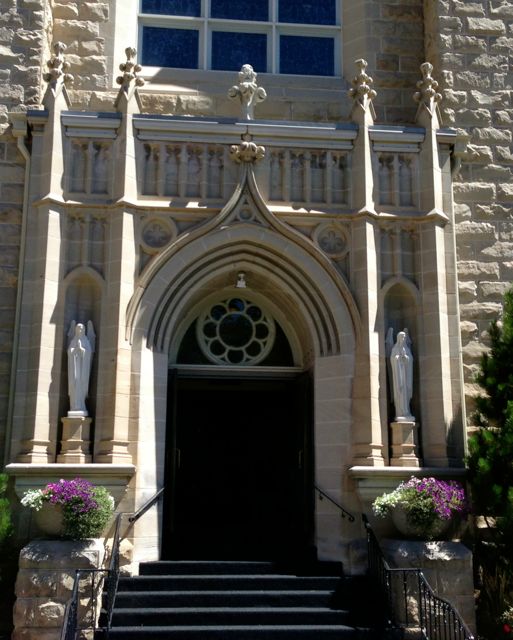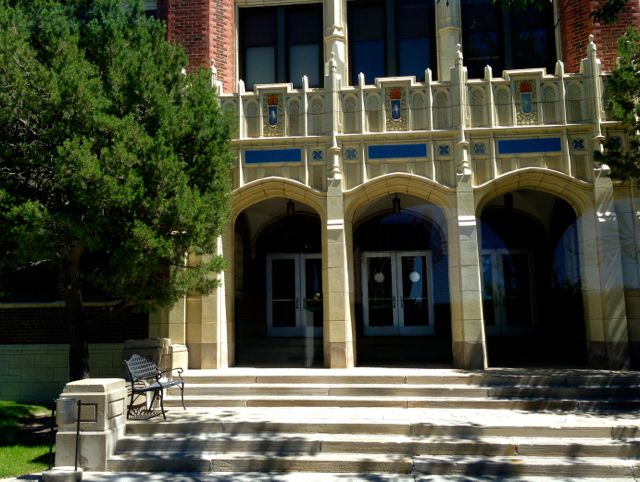If you were a 19th century American pioneer woman, would you go to a town that was nicknamed “Hell on Wheels”? Unless you were a hell raiser yourself, most respectable women would not. The city of Cheyenne faced this problem in the 19th century when they were trying to get the capital city of the territory of Wyoming admitted as a state into the United States. Even in Cheyenne Hell on Wheels towns did not have a good reputation.
Cheyenne in Wyoming was settled in 1867 when General Dodge and his crew chose a site for a terminus for the Union Pacific Railroad. The Union Pacific was one of the two railroad companies building the transcontinental railroad across the United States in the 1860’s. Pretty soon there were 3000 railroad workers who rolled into Cheyenne as workers for the Union Pacific. The railroad men brought along their usual followers – saloons, brothels, gambling dens, dancing girls and all the vice any Wild West town could need. The Cheyenne local paper had a daily column entitled “Last Night’s Shootings” which only goes to show how rough and tumble the town was.
The trains brought along prefab buildings which could be easily constructed to provide venues. For example, in the plaza right outside the railroad depot there were 80 saloons alone. As you can see in the photo below, the Depot plaza is not that big!
Apparently, the dancing girls were dancing even before some of the roofs were put on the buildings. The red light district was so-called because the railroad workers would take a red lantern with them when they left the job. They would leave the lantern outside of whichever house of ill-repute they chose for the night. In the morning, the bosses would round up their workers by looking for the red lanterns. The Union Pacific railroad and its tracks are still a significant part of the city today.
The city, which had been named after the mighty Cheyenne Native American tribe, soon became one of the towns nicknamed “Hell on Wheels”. These towns were so-called because of the vice and violence that followed the Union Pacific Railroad as it worked its way westward in the building of the transcontinental railroad. Interestingly, the Central Pacific Railroad which was working its way eastward from California had no such Hell on Wheels towns. Historians attribute this difference to the type of workers each company hired. The Union Pacific hired European immigrants (mostly Irish) who drank and gambled away their money whereas the Central Pacific hired Chinese workers who preferred to drink tea to whiskey.
Cheyenne had a serious bad reputation which did not make the more sedate citizens happy. So how did the citizens of Cheyenne build the respectable town that you have today? They made the town family-friendly.
Eventually the railroad workers moved onto the next stage of track building in Utah and so the rougher elements found another city to terrorise. Moreover, the area became wealthy with the raising of cattle and the gold rush. The residents of Cheyenne started building large and comfortable family homes.
Millionaire’s Row was the site of the grand homes of the cattle barons who only used their homes for a couple weeks of the year when they were in town. Still, the homes were a status symbol and no one was allowed to build on the street unless they owned at least 1000 head of cattle. If you had made your money from some other source such as supplying liquor to the saloons, you had to somehow get yourself a ranch and the requisite number of cattle.
The Victorian painted ladies were houses that had 3 or more different colours on their outsides. They were a favourite of George D. Rainsford, a New York architect, who came to Wyoming to be a horse breeder but continued to practice architecture on the side. His hobby produced so many houses that the Rainsford Historical District is named after him.
A lot of churches were built in the city. St. Mary’s Cathedral, the Roman Catholic church, for example, bought its land from the Union Pacific for a $1. The Union Pacific figured churches were a good way to bring the lawless crowd to heel. The men could stumble out of a tavern or a brothel straight into a church on Sunday morning.
The first Cheyenne publicly-funded primary school, made with extensively intricate brickwork and marble, is now government offices. The city clearly had money to throw around in those days.
When Cheyenne started out, there were only 12 trees in the city limits. The women of Cheyenne took it upon themselves to change the landscaping. They rode the trains out to places where there were trees, dug up the trees and brought them back to plant in their city. To provide water for the trees, the women would save up household water and give a bucket to schoolchildren to water a tree on the way to school. They would leave the bucket by the tree and so others would know it had been watered. It’s a completely different landscape today!
Remnants of the city’s hard-living past are still visible today but overall Cheyenne is a model of respectability. We were charmed by the city which was an unexpected and welcome surprise! Have you ever been to a place which you found better than you would expect it to be?
SPREAD THE WORD! PIN THIS TO YOUR TRAVEL PINTEREST BOARDS FOR FUTURE REFERENCE!
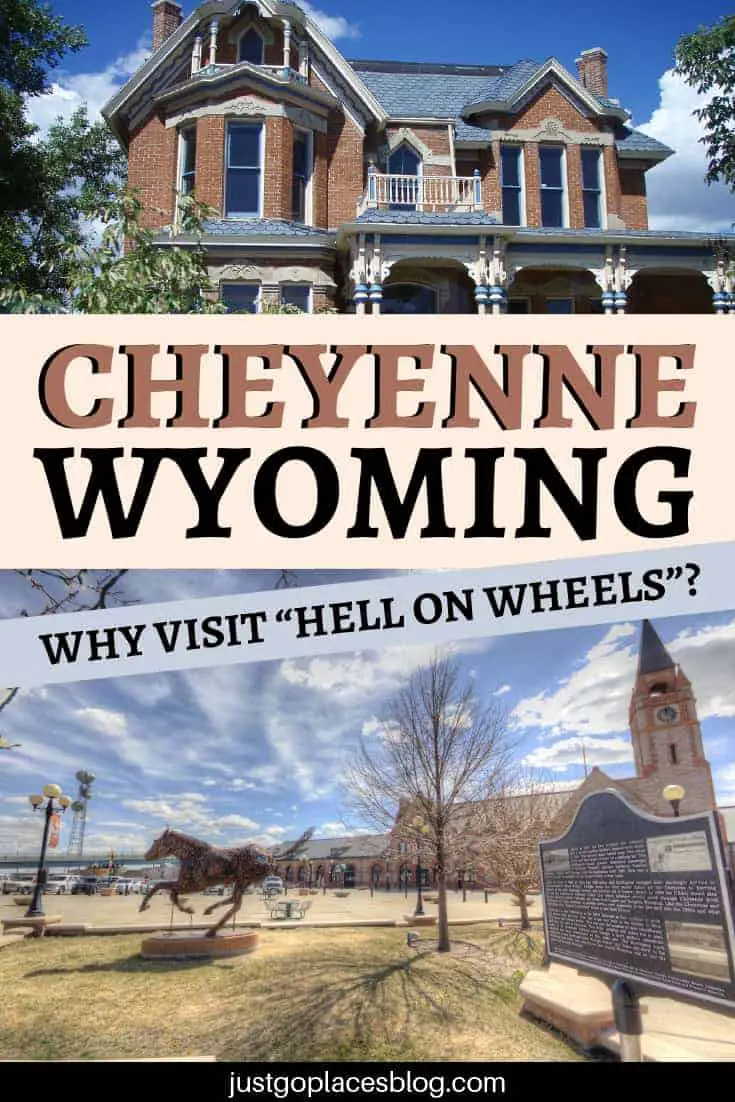
If you were a 19th century American pioneer woman, would you go to a town that was
nicknamed “Hell on Wheels”? Probably not. But luckily, the town of Cheyenne, Wyoming, is
today a delightful destination. Cheyenne, Wyoming has many things to do with kids: visit it
and discover why this town was known as Hell on Wheels on your next Wyoming Road Trip.
#Cheyenne #Wyoming #RoadTripUSA #usa #hellonwheels
This site generates income via partnerships with carefully-curated travel and lifestyle brands and/or purchases made through links to them at no extra cost to you. More information may be found on our Disclosure Policy.


